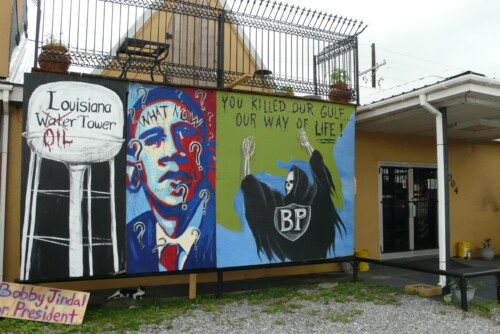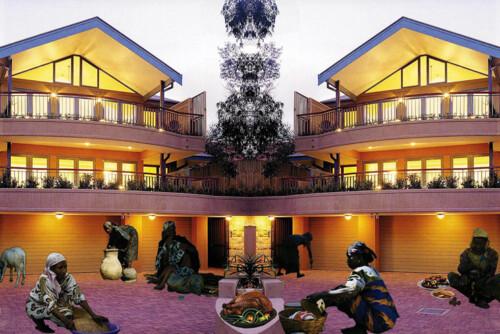In January 2009, we started a photovoice project with ten women sex workers in the Yongsan red-light district, an area targeted for demolition. Together with its surrounding neighborhoods, the red-light district occupied a prime location in front of a major train station in Seoul. A week after the project was begun, the National Alliance of Evictees staged a protest on top of a building directly across from the red-light district to demand just compensation, after which anti-raid police launched a violent crackdown. The police response to the protest led to a fatal fire in which four protesting evictees and a policeman were killed. The deaths shocked the nation, as such heavy-handed government action had not been seen in South Korea in the last decade.
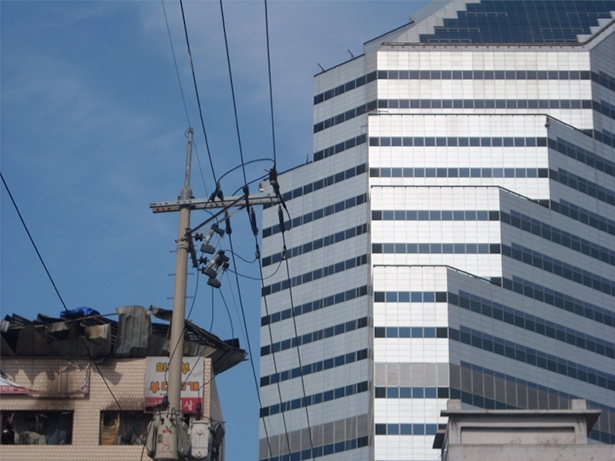
Photovoice is a form of participatory photography in which the subjects themselves generate photographic works as a form of social commentary.1 The photovoice project was an offshoot of an oral life history project with women ranging from forty-five to sixty-five years old conducted by the Courageous Women Research Center, a part of the local nongovernmental organization Magdalena House Community first founded in Yongsan in 1986. The author and other researchers from the Center sought to explore visual media in addition to oral narratives as a means through which to convey the women’s relationship with the space. The photographers captured over 2,500 images in the first six months of the projects: photographs of the women’s daily lives at home; the women on their way to work, and at work; the women at play and with their friends and co-workers; and shots of the structures and their remnants that served as reminders of their impending eviction.
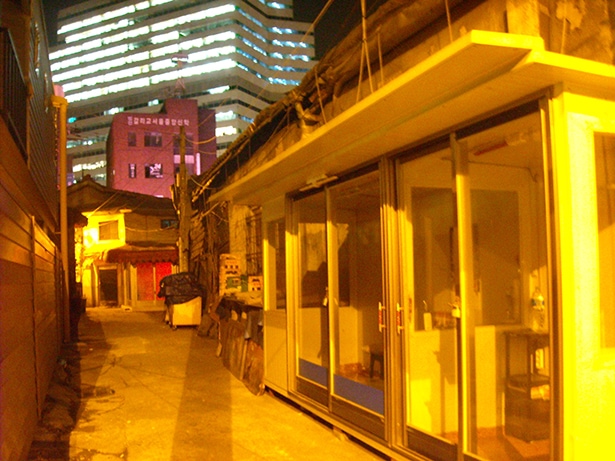
These women have lived at the intersection of multiple social, economic, and urban reforms since the new millennium–part of South Korea’s neoliberal development since the late 1990s. Most notably, they were targeted by the global anti-trafficking initiative, which was interpreted locally as an anti-prostitution drive. In the name of combatting trafficking and forced prostitution, the South Korean government passed two pieces of legislation in 2004 that expanded police power, in order to crackdown on and penalize prostitution while providing welfare support for authentic victims. Although the laws prompted mass protests and even a hunger strike from sex workers, both the government and women’s organizations hailed the laws as a success in protecting women’s human rights. The threat of new police surveillance was simultaneous with the rapid modernization and gentrification of the metropolitan city. In 2004, the same year that the anti-prostitution laws were passed, the Seoul Metropolitan government announced its blueprint for urban renewal. The plan denounced sex workers–along with working class residents, small business-owners, and street vendors–as irreconcilable with the city’s middle class ambience. Such denunciations paved the way for the idea that the progress of the city depended on purging the spaces in which these individuals lived and worked.
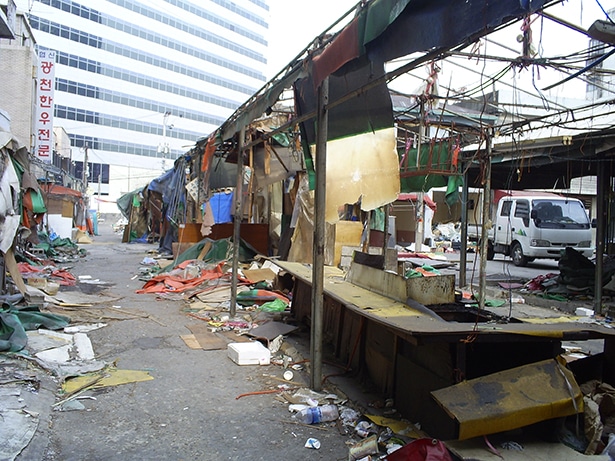
Compensation for being removed from the area was hardly adequate and rarely reached the hands of small tenants like the women photographers who participated in this project. Witnessing the fatal fire and living with its aftereffects on a daily basis reminded them of the whirlwind of change they faced in their lives—change over which they had little control. Some of these photographs provided us with a glimpse into how they saw their marginalization in Korean society. Between October 2009 and April 2010, a collective effort between the photographers and the researchers led to the curation of forty of the photographs for the traveling exhibit “Our Lives, Our Space: Views of Women in a Red-light District,” hosted by campuses on the east coast of the United States. By March 2012, all the residents in the red-light district had departed, and the bulldozers marched in.
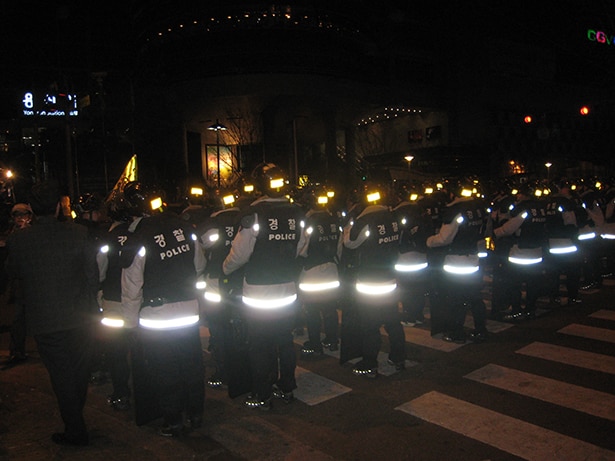
- Wang, C., Burris, M. and Xiang, Y. (1996) Chinese village women as visual anthropologists: a participatory approach to reaching policymakers. Social Science and Medicine 42:139-1400. [↩]
